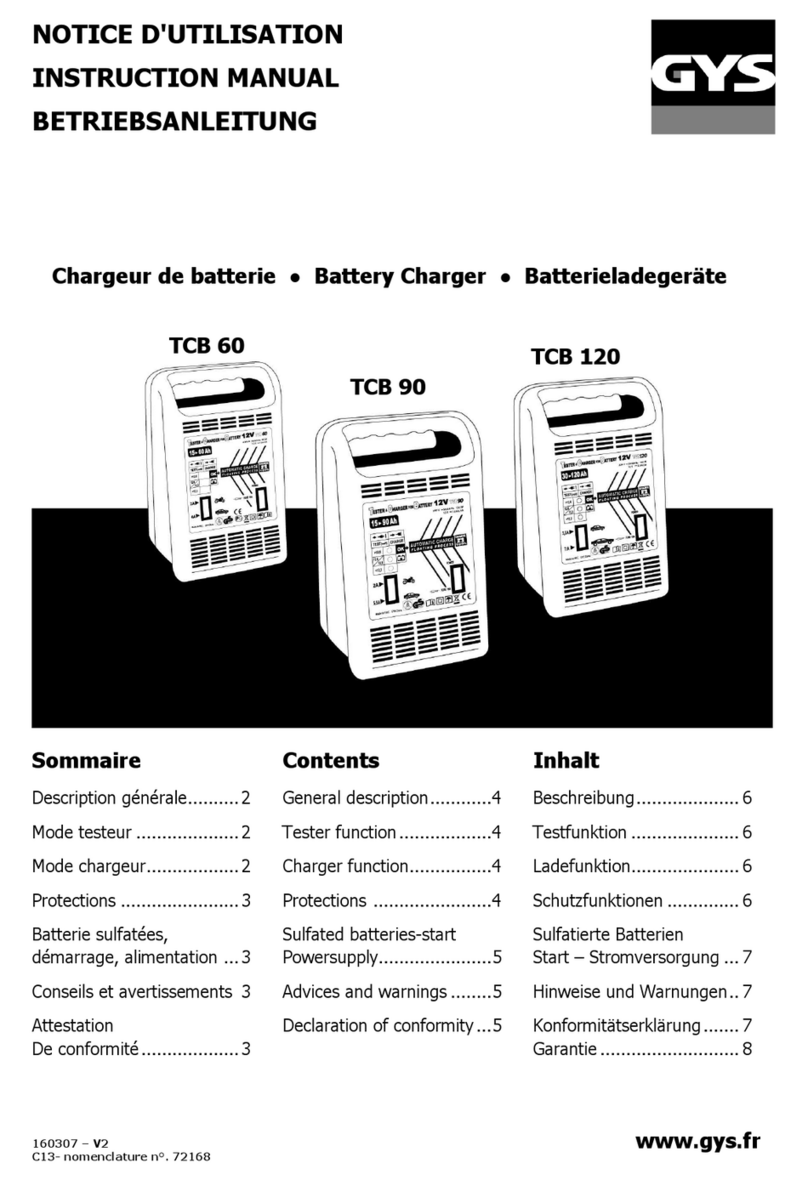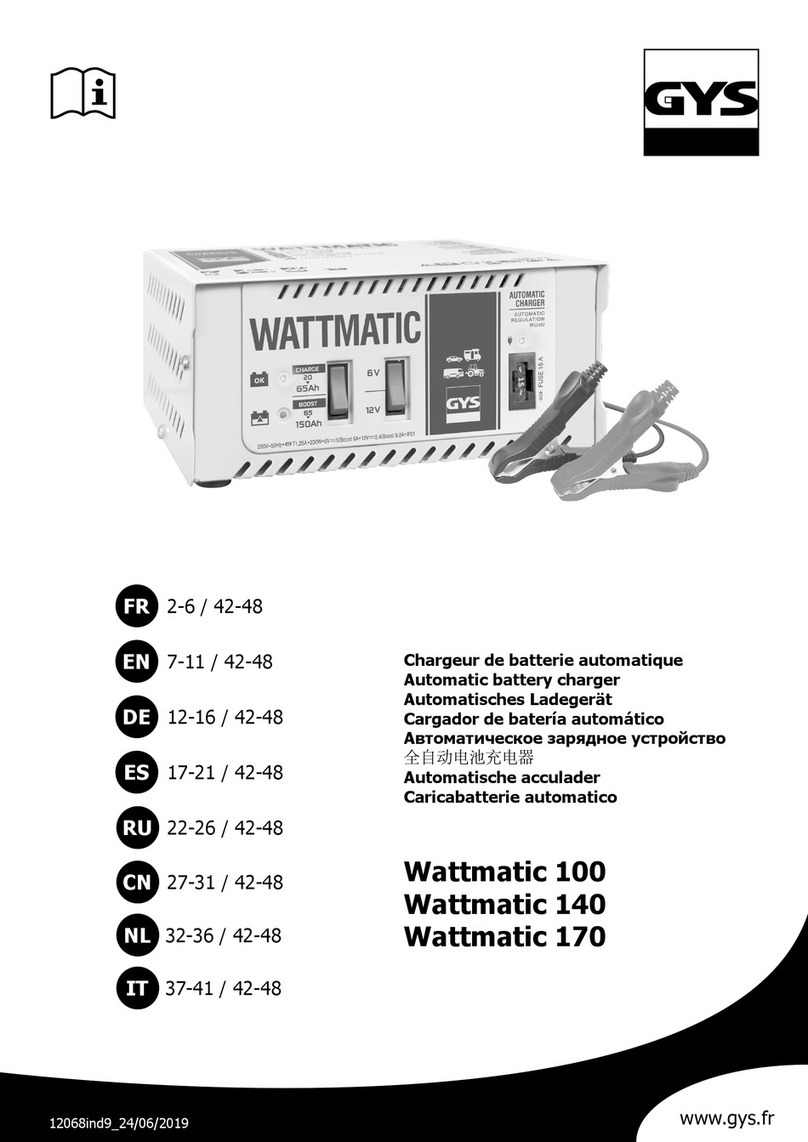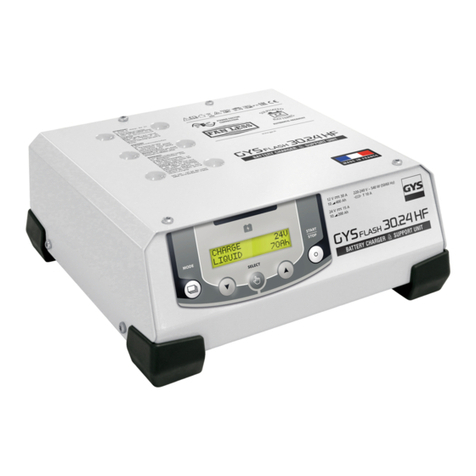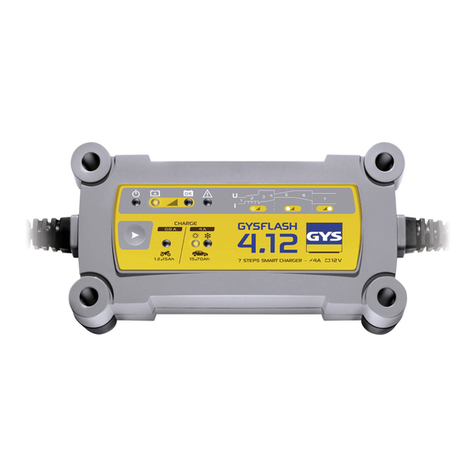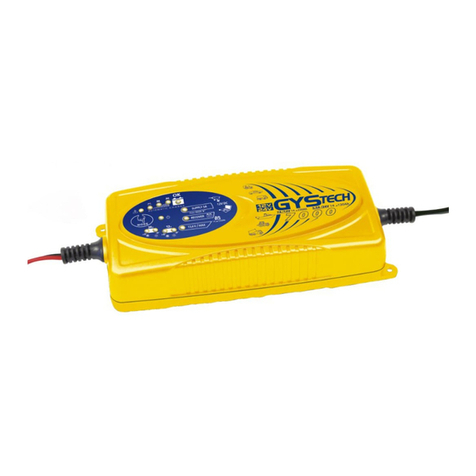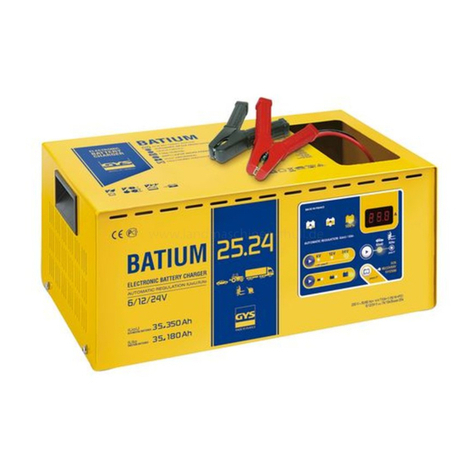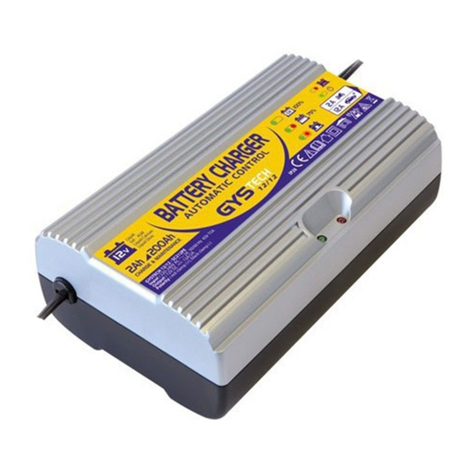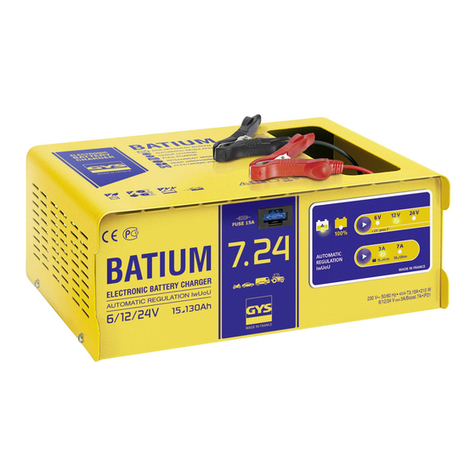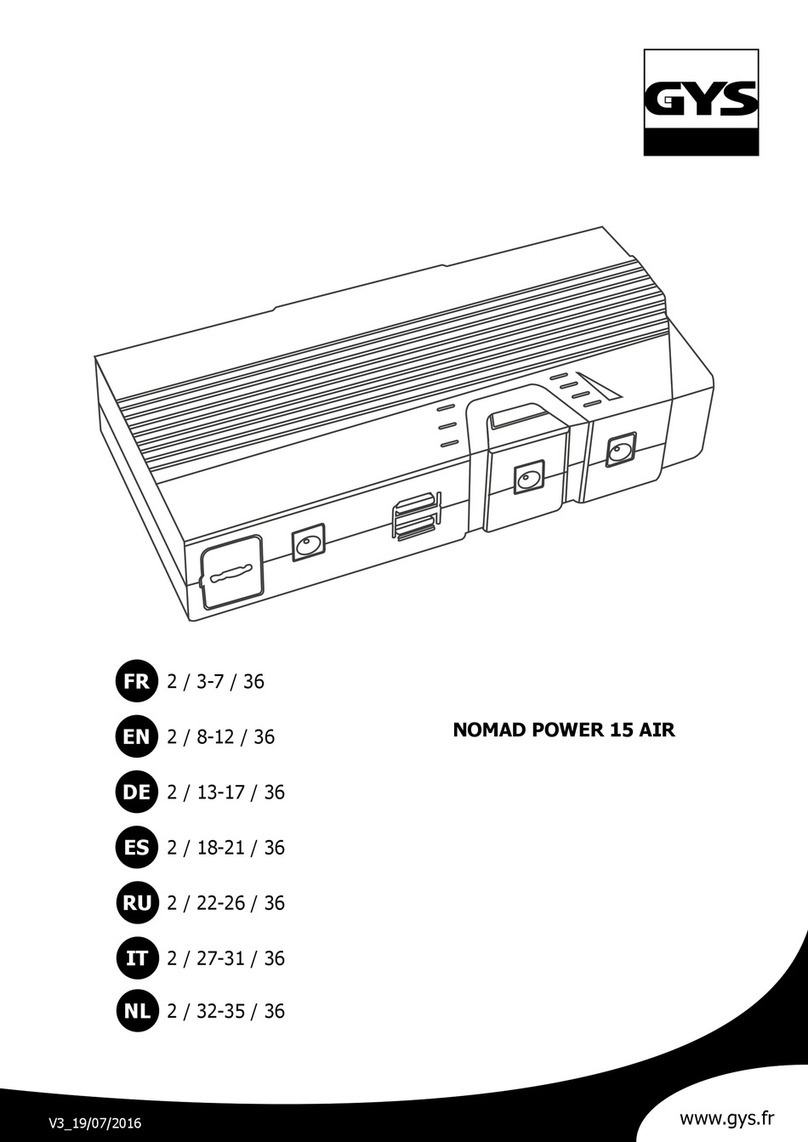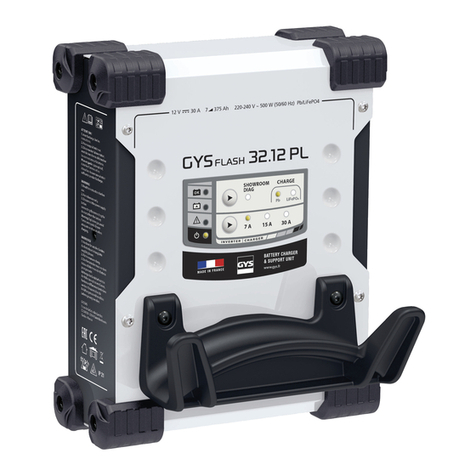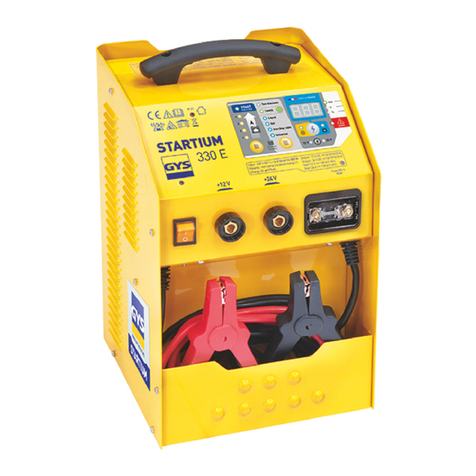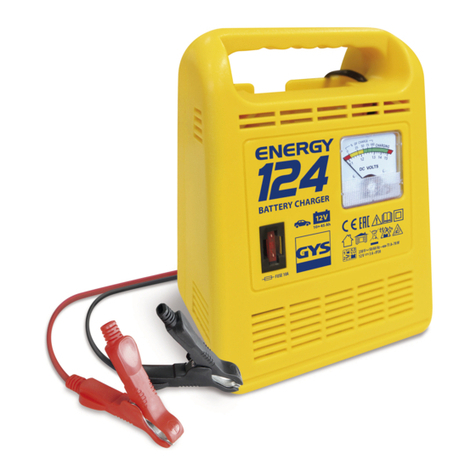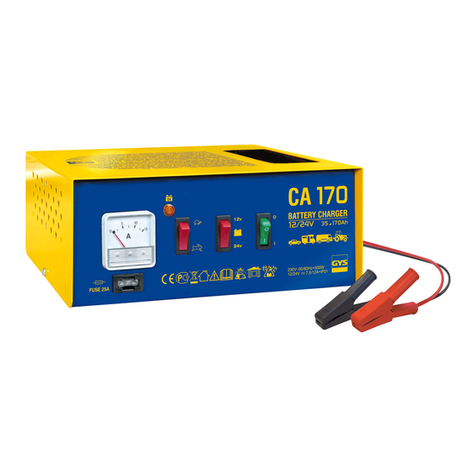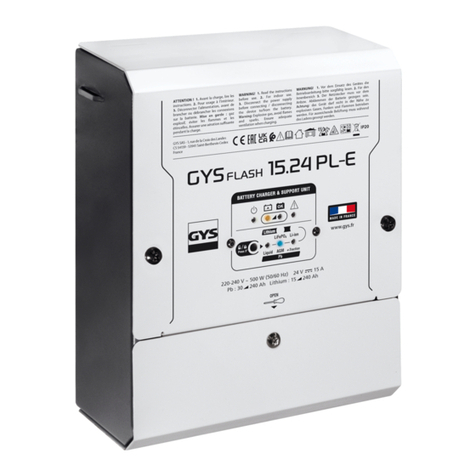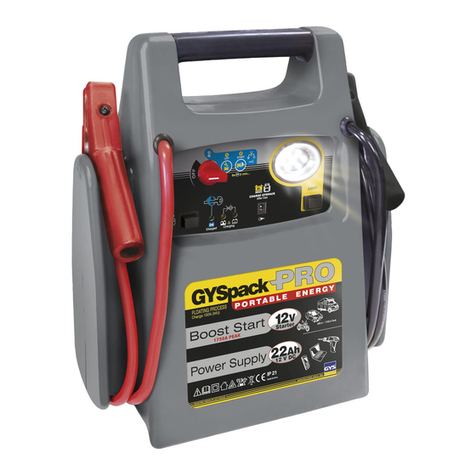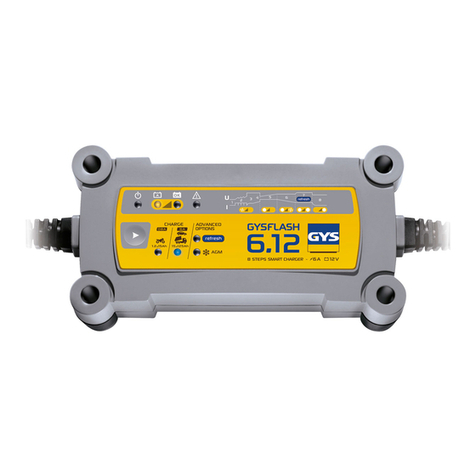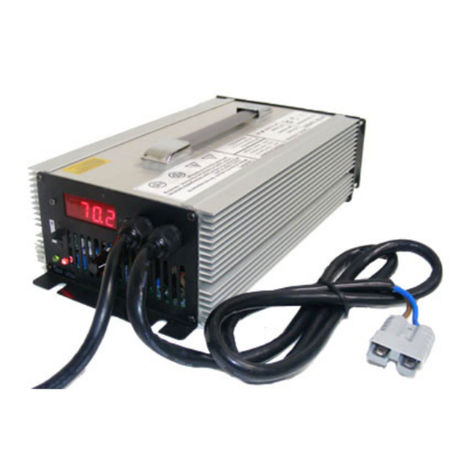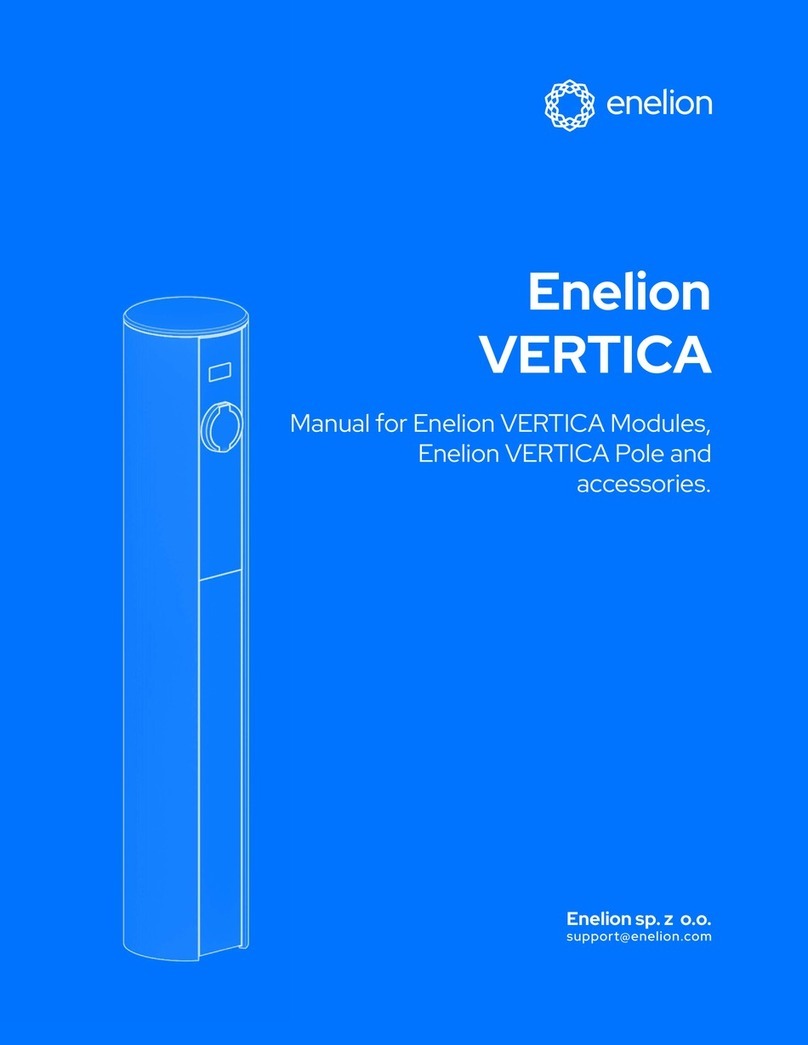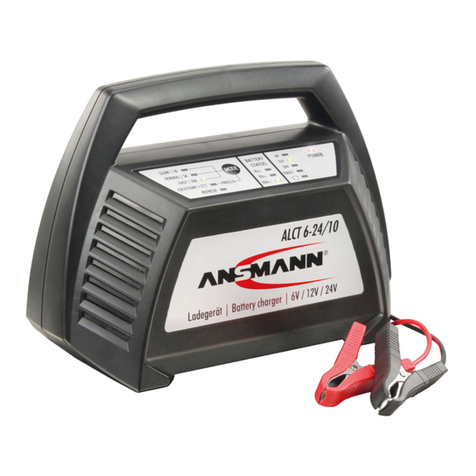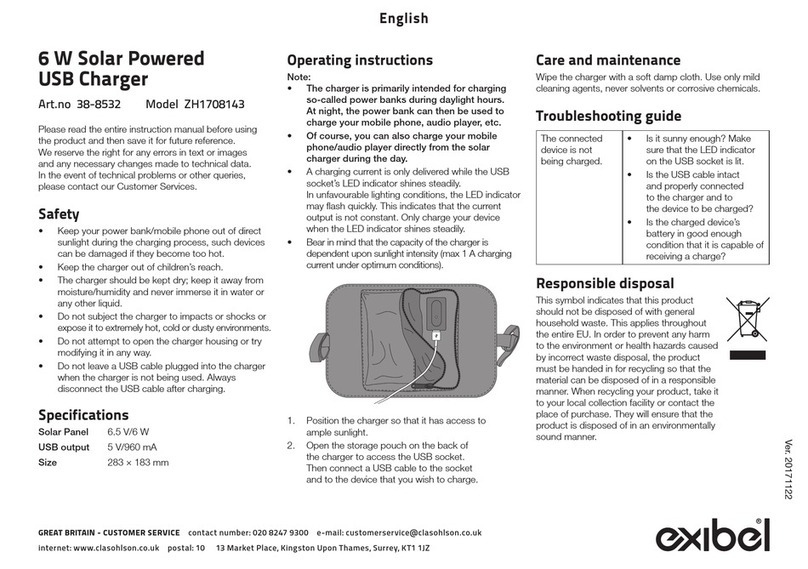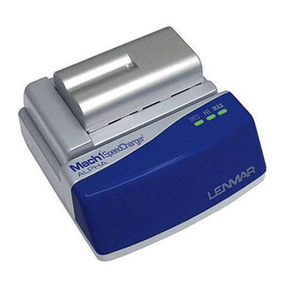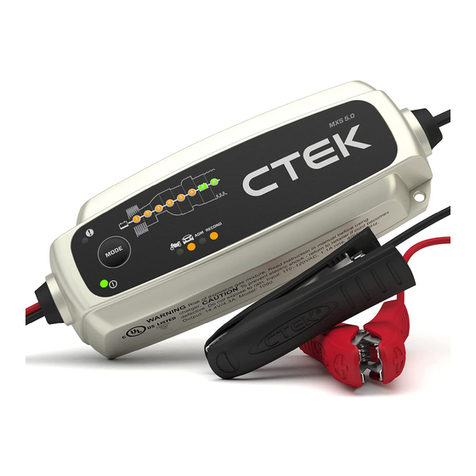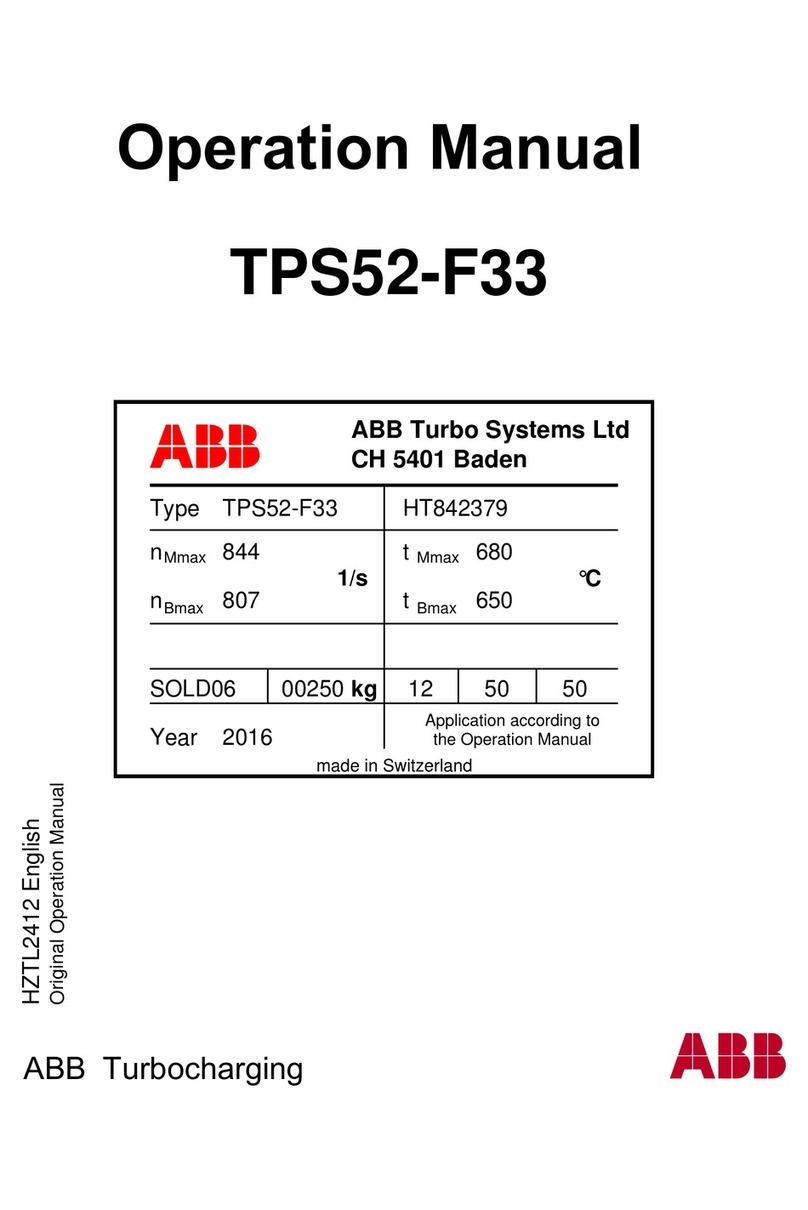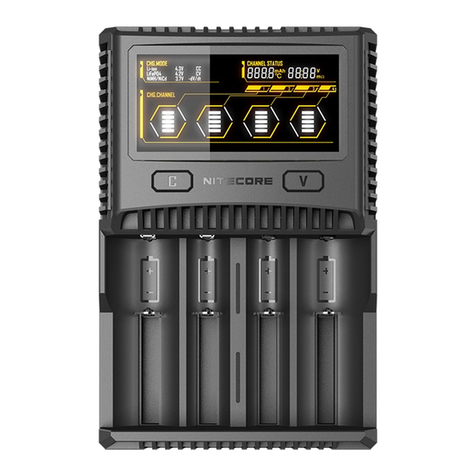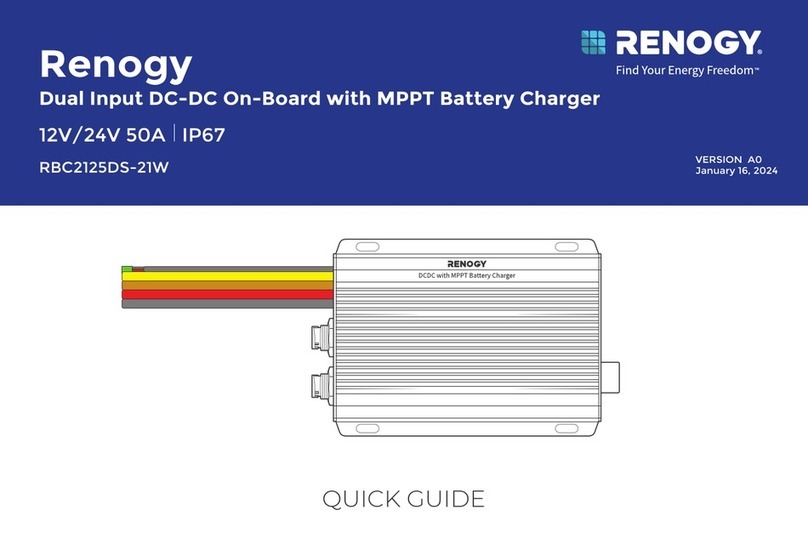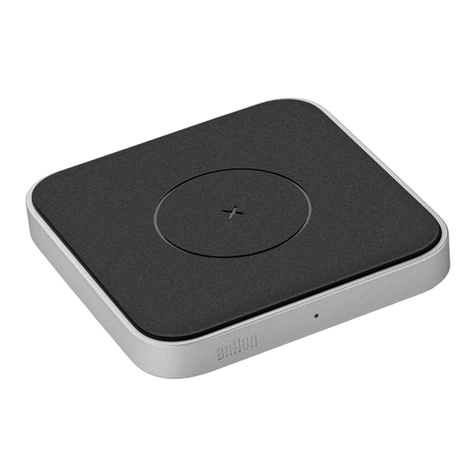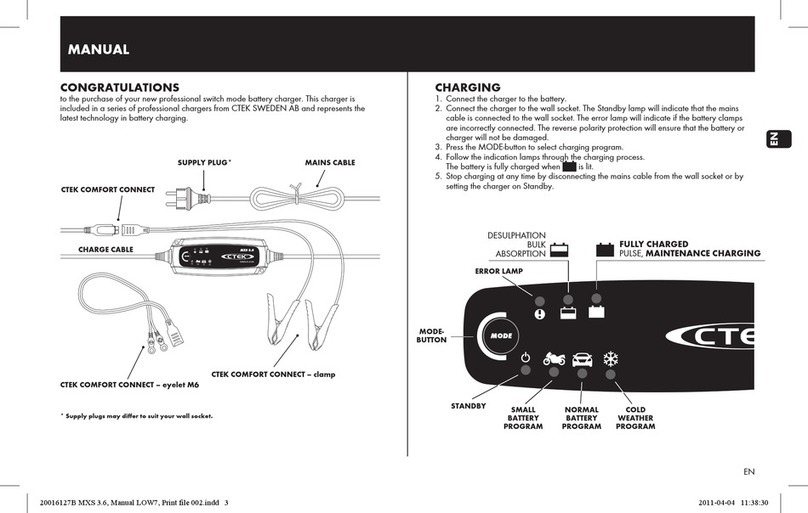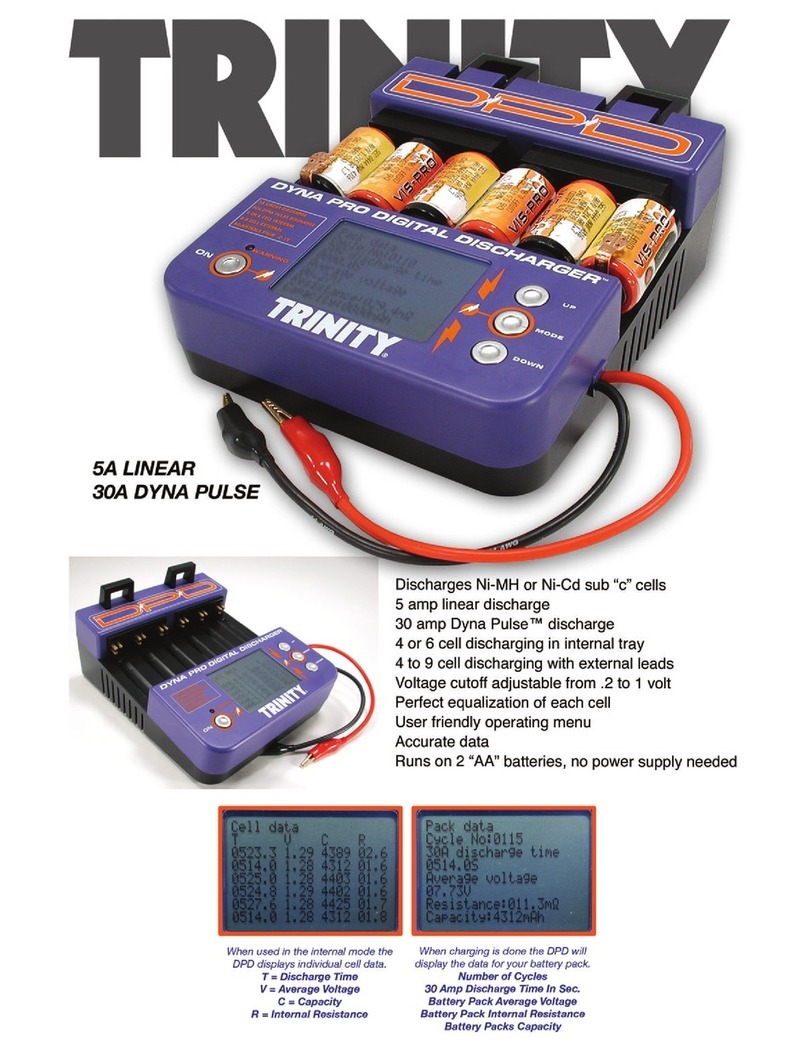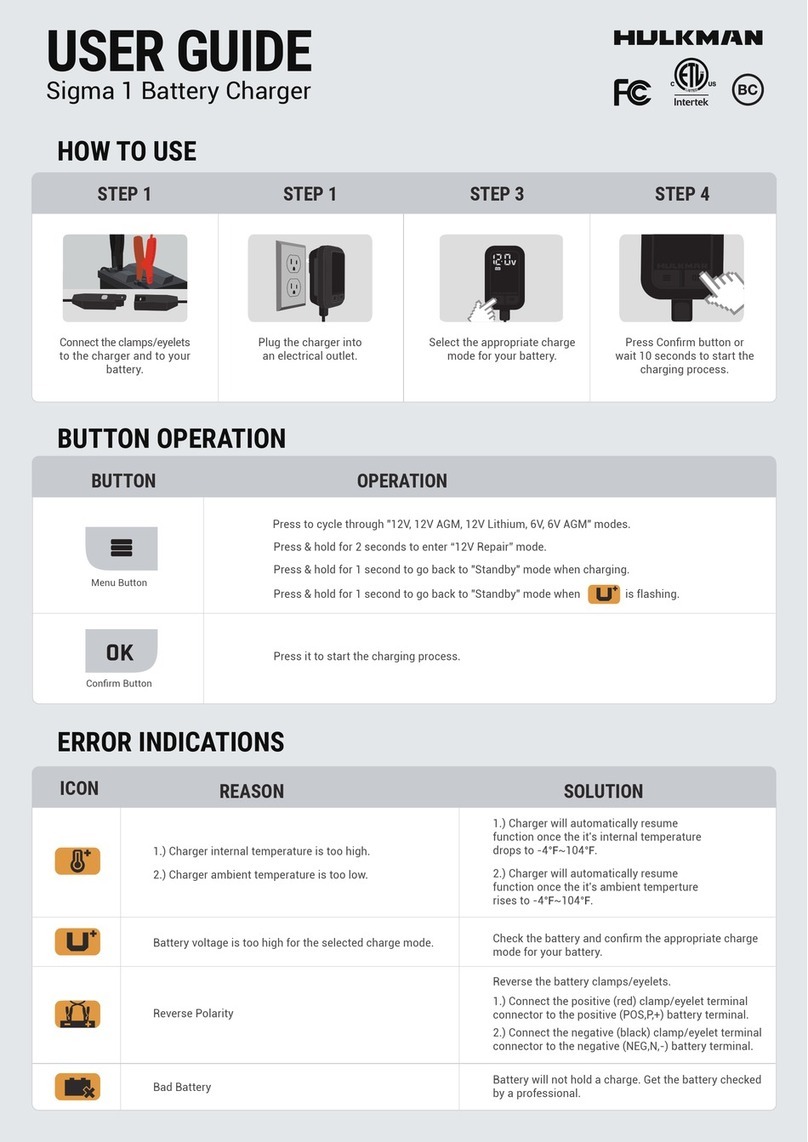
5
MULTICHARGE CT 48 FR
Notice originale
• Si plusieurs batteries ne respectant pas les conditions ci-dessus sont chargées simultanément, la batterie :
- ayant la tension la plus faible,
- ayant la capacité la plus faible,
- la plus récente,
risque d’être détériorée ou même d’exploser avant que le chargeur n’atteigne la n de charge.
• Éviter les combinaisons de connexion à la fois en série et en parallèle.
• En cas de batteries connectées en série, vérier régulièrement au cours de la charge que les niveaux de ten-
sion de chacune des batteries sont identiques.
Si une batterie présente un niveau de tension différent des autres, il est préférable de la recharger individuel-
lement an de ne pas déséquilibrer la charge des autres éléments.
• Pour cette raison, dans le cas de batteries destinées à être rechargées en série avec le Multicharge CT 48
(ex : alimentation sur batteries stationnaires, batteries de traction, batteries 24 V de poids lourds assemblée
à partir de 2 batteries de 12 V...), il est indispensable de changer toutes les batteries en même temps par des
batteries neuves et identiques dès que l’une d’entre elles est détériorée.
La tension à vide de ce chargeur peut être importante en fonction de la position de charge.
Attention à ne pas toucher l’extrémité sous tension des pinces lorsque l’appareil est en service.
Attention particulière recommandée aux porteurs de pacemaker.
Enlever les bouchons des batteries (si celles-ci en sont munies) et s’assurer que le niveau de liquide ou gel
(électrolyte) est sufsant. Dans le cas contraire ajouter de l’eau déminéralisée et nettoyer soigneusement
les bornes et cosses des batteries.
Mise en charge d’une batterie
1. Positionner le commutateur de charge de l’appareil en position «OFF».
2. Relier les pinces aux bornes de la batterie en assurant un bon contact, en respectant l’ordre suivant :
- Connecter la pince rouge à la borne + de la batterie.
- Connecter ensuite la pince noire soit sur le châssis du véhicule le plus loin possible du circuit de combustible
(an de limiter tout risque d’explosion), ou à la borne négative de la batterie.
3. Connecter le cordon secteur à une alimentation secteur 230 V - 50/60 Hz.
4. Sélectionner la tension de sortie en fonction de la (des) batterie(s) à recharger.
5. Sélectionner la vitesse de charge et le mode normal ou boost*suivant le tableau ci-dessous :
Sélection tension
de sortie
Sélection vitesse de charge
123456
12V 20 A 24 A 25 A 28 A 29 A 32 A
24V 20 A 22 A 24 A 26 A 29 A 32 A
36V 19 A 22 A 24 A 26 A 28 A 30 A
48V 15 A 17 A 18 A 20 A 22 A 24 A
*
En position «boost» les protections thermiques du chargeur risquent de se déclencher et d’interrompre la charge. La position «boost» est donc
dédiée à une charge rapide mais incomplète de la batterie (par exemple an de permettre le démarrage d’un véhicule).
Conseil d’utilisation pour une batterie fortement déchargée (tension à vide < 10,5 V pour une batterie de 12V )
1. Choisir une position de charge rapide (5 ou 6).
2. Régulièrement (quand la valeur du courant se rapproche de 0 A) passer à la position inférieure.
3. Répéter l’opération jusqu’à la position 1 de charge nale.
Surveillance et n de charge
- Ampèremètre et voltmètre donnent le courant et la tension de sortie du CT 48. Ce sont par conséquent des indica-
teurs de charge. La charge peut être interrompue quand le courant atteint une valeur proche de 0.
- Ne pas laisser l’appareil connecté plus de 24 heures sur une batterie.
- Une fois la charge terminée mettre dans cet ordre le commutateur de vitesse de charge sur « OFF », puis débran-
cher le chargeur du secteur et enn retirer les pinces des bornes (-) puis (+) de la batterie.

